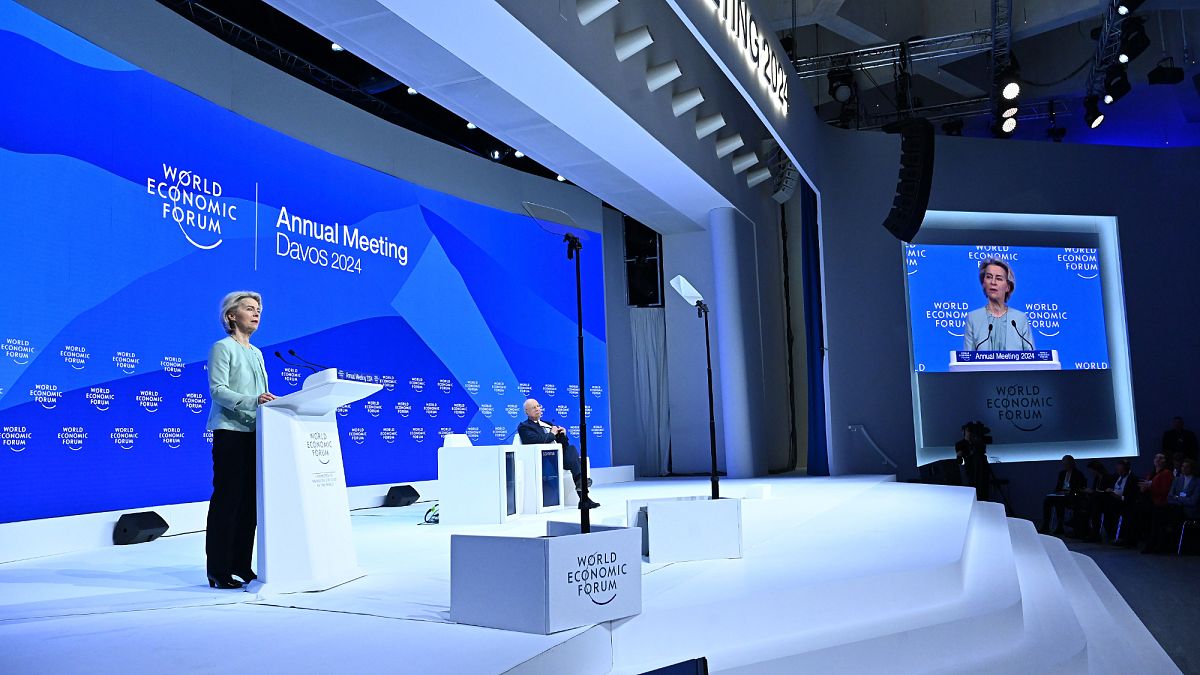Europe
EU sticks to 90% emissions cut, aims to be clean tech ‘world leader’

Unveiling the Vision for a Clean Industrial Revolution
The European Commission, under the leadership of Ursula von der Leyen, has ambitious plans to transform the EU into a global leader in clean technology through its Clean Industrial Deal (CID). Leaked drafts of this highly anticipated policy reveal a strategy that aims to position Europe as the world leader in the circular economy by 2030. At its core, the CID seeks to challenge the dominance of the US and China in clean tech while creating a thriving industrial ecosystem that drives growth and prosperity. The plan outlines six key "business drivers" to achieve this vision, including affordable energy, boosting demand for green technologies, and enhancing access to essential raw materials. While the draft builds on previously announced initiatives, it also introduces new measures to accelerate decarbonization and promote sustainability across industries.
Affordable Energy: The Foundation of the Clean Industrial Deal
One of the cornerstone strategies of the Clean Industrial Deal is ensuring access to affordable energy, a critical factor in driving industrial transformation. The Commission plans to launch an action plan for affordable energy on 26 February, alongside the CID. This initiative includes a pilot program for corporate power purchase agreements (PPAs) in collaboration with the European Investment Bank (EIB). PPAs are designed to enable companies to directly purchase renewable energy, reducing costs and encouraging the adoption of clean energy sources. Additionally, the draft proposes a "grids manufacturing package" to address Europe’s weaker transmission networks, which have been identified as a significant barrier to electrifying transport and industry. However, the financial details of these projects remain unclear, indicating that the EU executive is still finalizing funding allocations. The plan also emphasizes the need to streamline permitting procedures and improve the efficiency of the gas market, with recommendations on energy taxation expected in 2024.
Boosting Demand for Green Technologies
The second key driver of the Clean Industrial Deal is the creation of "lead markets" for green technologies. To achieve this, the Commission will introduce the Industrial Decarbonisation Accelerator Act by the end of 2023, a measure already highlighted in von der Leyen’s political priorities. This act will help create demand for innovative solutions, particularly in the production and use of hydrogen as a substitute for fossil fuels in industrial processes. The draft also promises to clarify the rules for producing low-carbon hydrogen, ensuring a pragmatic approach to its development and deployment. Furthermore, the plan includes measures to boost financing for green technologies, increase circularity, and secure access to essential raw materials. These efforts aim to create a robust and competitive industrial ecosystem that can rival global powers like the US and China.
Financing the Transition and Building a Skilled Workforce
Despite its ambitious vision, the Clean Industrial Deal faces significant challenges in securing the necessary funding and workforce to drive its goals. The leaked draft acknowledges that many financial details remain unresolved, leaving a critical gap in the plan. This lack of clarity raises questions about who will bear the costs of the transition and how the EU will mobilize the required resources. Additionally, the draft recognizes the need for a skilled workforce to support the clean industrial revolution. To address this, the Commission plans to launch a "Union of Skills" initiative on 5 March, alongside an action plan for European carmakers. This initiative will focus on upskilling workers and preparing them for the challenges of a decarbonized economy. However, experts warn that without concrete financing commitments, the EU risks falling short of its targets.
Staying the Course on Climate Ambition
The Clean Industrial Deal reaffirms the EU’s commitment to its climate goals, including a 90% reduction in greenhouse gas emissions by 2040. This target, which aligns with the recommendations of the EU’s scientific advisors, reflects the Commission’s determination to "stay the course" on climate action. The draft echoes recent statements by von der Leyen, emphasizing the importance of accelerating the deployment of renewable energy and placing circularity at the heart of Europe’s industrial strategy. While this commitment is encouraging, critics argue that the plan falls short in addressing energy savings and resource efficiency, which are critical for building a resilient economy. Greg Van Elsen of the Climate Action Network Europe notes that the draft’s direction is "broadly right" but lacks the necessary detail and ambition in key areas.
Expert Criticism and the Road Ahead
Despite its promise, the Clean Industrial Deal has drawn criticism from experts who highlight its shortcomings. Van Elsen points out that the draft fails to adequately address energy savings and resource use, which are essential for creating a sustainable and resilient economy. Additionally, the lack of detailed financing plans leaves significant questions unanswered, particularly regarding how the EU will fund its ambitious initiatives. While the direction of the policy is seen as positive, these gaps could undermine its effectiveness. As the EU prepares to finalise the Clean Industrial Deal, the coming weeks will be crucial in addressing these criticisms and ensuring that the plan is both comprehensive and actionable. The success of the CID will depend on the EU’s ability to secure the necessary funding, streamline processes, and build the skills needed to lead the global clean tech race.